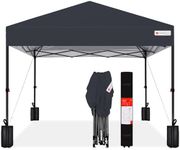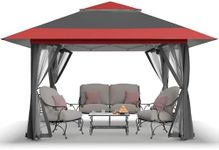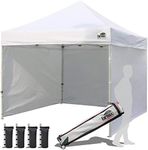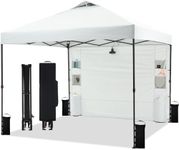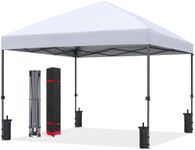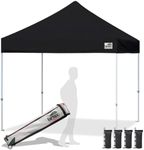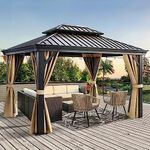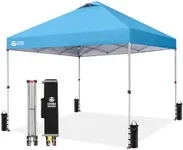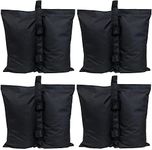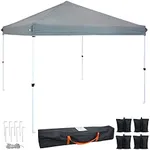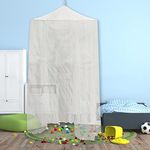Buying Guide for the Best Canopies
Choosing the right canopy can make a significant difference in your outdoor experience, whether you're planning a camping trip, hosting an event, or simply looking for some shade in your backyard. The key to selecting the best canopy for your needs is understanding the various specifications and how they align with your intended use. Here are some important factors to consider when picking a canopy.SizeThe size of the canopy is crucial because it determines how much space you will have under it. Canopies come in various sizes, typically measured in feet. Small canopies (6x6 to 8x8 feet) are great for personal use or small gatherings. Medium canopies (10x10 to 12x12 feet) are suitable for family outings or small events. Large canopies (13x13 feet and above) are ideal for bigger events or commercial use. Consider the number of people and the amount of equipment or furniture you need to cover when choosing the size.
MaterialThe material of the canopy affects its durability, weight, and weather resistance. Common materials include polyester, polyethylene, and canvas. Polyester is lightweight and water-resistant, making it suitable for occasional use. Polyethylene is more durable and waterproof, ideal for frequent use and harsher weather conditions. Canvas is the most durable and offers excellent protection from the sun and rain but is heavier and more expensive. Choose a material based on how often you plan to use the canopy and the typical weather conditions in your area.
FrameThe frame of the canopy provides support and stability. Frames are usually made from steel or aluminum. Steel frames are strong and durable but can be heavy and prone to rust if not properly treated. Aluminum frames are lightweight, rust-resistant, and easier to transport, but they may not be as sturdy as steel. If you need a canopy for frequent use or in windy conditions, a steel frame might be better. For occasional use or if you need something easy to carry, an aluminum frame could be more suitable.
PortabilityPortability is an important factor if you plan to move the canopy frequently. Look for canopies that come with a carrying case or bag, and consider the weight and ease of setup. Lightweight materials and simple designs make for easier transport and quicker assembly. If you need a canopy for events or camping trips, portability will be a key consideration. For more permanent setups, portability may be less of a concern.
Weather ResistanceWeather resistance refers to how well the canopy can withstand various weather conditions such as rain, wind, and sun. Look for canopies with UV protection to shield against harmful sun rays, waterproof materials to keep you dry during rain, and sturdy frames to withstand wind. Some canopies also come with sidewalls for additional protection. If you live in an area with unpredictable weather or plan to use the canopy year-round, weather resistance is a critical factor.
Ease of SetupThe ease of setup can greatly affect your overall experience with the canopy. Some canopies feature pop-up designs that can be set up in minutes without any tools, while others may require more time and effort to assemble. If you plan to use the canopy frequently or need to set it up quickly, look for models with a simple, tool-free setup. For occasional use, a more complex setup might be acceptable if it offers other benefits like increased stability or durability.

